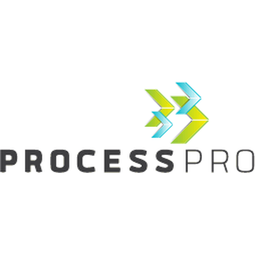Technology Category
- Functional Applications - Enterprise Resource Planning Systems (ERP)
- Functional Applications - Inventory Management Systems
Applicable Functions
- Warehouse & Inventory Management
Use Cases
- Inventory Management
- Picking, Sorting & Positioning
Services
- System Integration
The Customer
Pacific Nutritional, Inc. (PNI)
About The Customer
Pacific Nutritional, Inc. (PNI) is a company that operates in a highly regulated industry. They focus on helping their customers develop products and services that will increase their client’s market share. PNI was experiencing a need for a software system that could meet their long-term needs and grow with them in their changing industry. They were operating on a system that was not fully integrated, causing inefficiencies in their operations. PNI has a strong commitment to providing exceptional products and services to their clients, and they needed a system that could support this commitment.
The Challenge
Pacific Nutritional, Inc. (PNI) was facing several challenges with their existing system. They were operating on a manufacturing system that was not integrated with their accounting system, causing inefficiencies and potential errors. The company was also in need of a system that was specifically designed for their highly regulated industry. Furthermore, PNI was looking to upgrade from a DOS operating system to a Windows system. They also required a strong, committed client service team to support the software. The need for a fully integrated ERP system was paramount to streamline their operations and meet industry regulations.
The Solution
PNI implemented ProcessPro’s ERP solution in 2008. This solution was specifically designed to meet the needs of highly regulated industries, making it a perfect fit for PNI. The ERP system was fully integrated, connecting the manufacturing and accounting systems, and was supported by a strong client service team. The system was also compatible with a Windows operating system, meeting PNI's requirement for an upgrade. In addition to the core ERP system, PNI also implemented add-on applications for scheduling and warehouse management. These applications further enhanced the functionality of the ERP system, providing PNI with a comprehensive solution to their operational challenges.
Operational Impact
Quantitative Benefit

Case Study missing?
Start adding your own!
Register with your work email and create a new case study profile for your business.
Related Case Studies.

Case Study
Hospital Inventory Management
The hospital supply chain team is responsible for ensuring that the right medical supplies are readily available to clinicians when and where needed, and to do so in the most efficient manner possible. However, many of the systems and processes in use at the cancer center for supply chain management were not best suited to support these goals. Barcoding technology, a commonly used method for inventory management of medical supplies, is labor intensive, time consuming, does not provide real-time visibility into inventory levels and can be prone to error. Consequently, the lack of accurate and real-time visibility into inventory levels across multiple supply rooms in multiple hospital facilities creates additional inefficiency in the system causing over-ordering, hoarding, and wasted supplies. Other sources of waste and cost were also identified as candidates for improvement. Existing systems and processes did not provide adequate security for high-cost inventory within the hospital, which was another driver of cost. A lack of visibility into expiration dates for supplies resulted in supplies being wasted due to past expiry dates. Storage of supplies was also a key consideration given the location of the cancer center’s facilities in a dense urban setting, where space is always at a premium. In order to address the challenges outlined above, the hospital sought a solution that would provide real-time inventory information with high levels of accuracy, reduce the level of manual effort required and enable data driven decision making to ensure that the right supplies were readily available to clinicians in the right location at the right time.

Case Study
DHL Supply Chain Growing Use of AR Glasses
A picker with an RF scanner is constantly looking at the gun to get pick commands, hitting the confirm button and doing things in sequential fashion which is time consuming. Warehouse operations costs add up to 20% of the total logistics costs for DHL.

Case Study
Hardware Retailer Uses Data Warehouse to Track Inventory
Ace tracked which products retailers ordered, when they were ordered and shipped. However, the company could not track or forecast actual sales. Data used for reporting was up to a one-week old, owing to performance and data cleansing issues. Requirement to integrate wholesale and inventory data with POS data to help drive key business decisions, improve category management, lower inventory costs and optimize pricing. Reliance on custom coding to integrate POS data was excessively resource intensive and led to major performance constraints.

Case Study
Remake Enterprise-to-production System
The client was running a legacy material flow tracking system and wanted to replace the system with a more effective one as the system was increasingly expensive to maintain and support and also was not extendable. The client's IT landscape was filled with modern applications and it was difficult to interface the material flow tracking system with modern applications.





